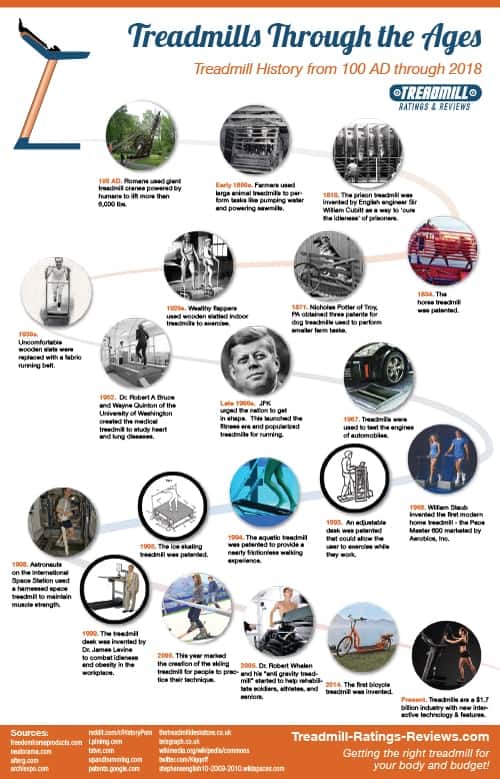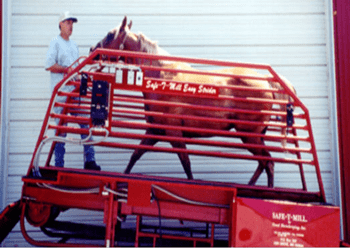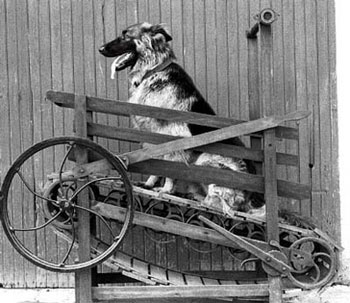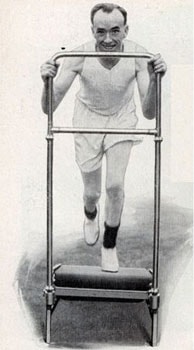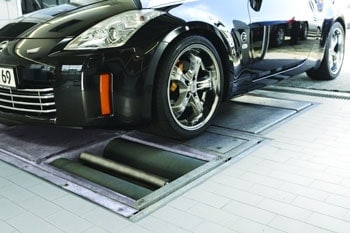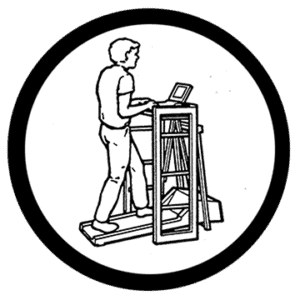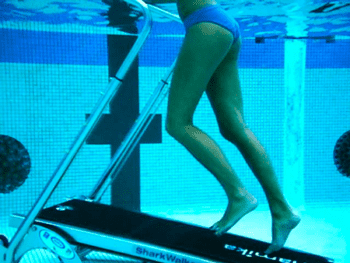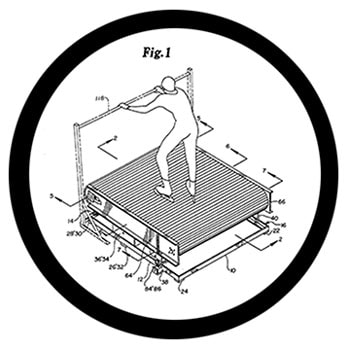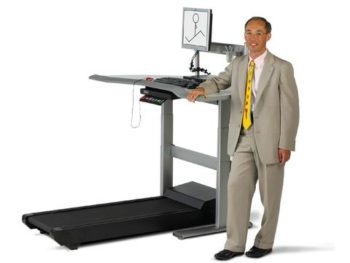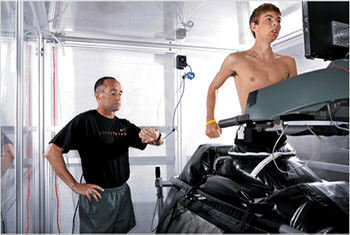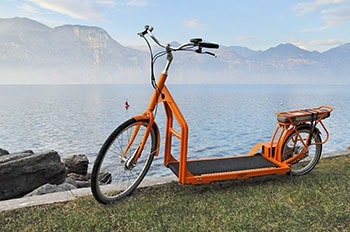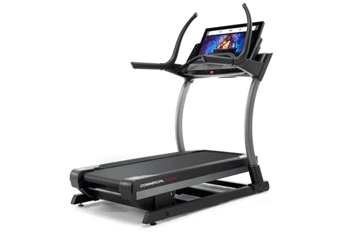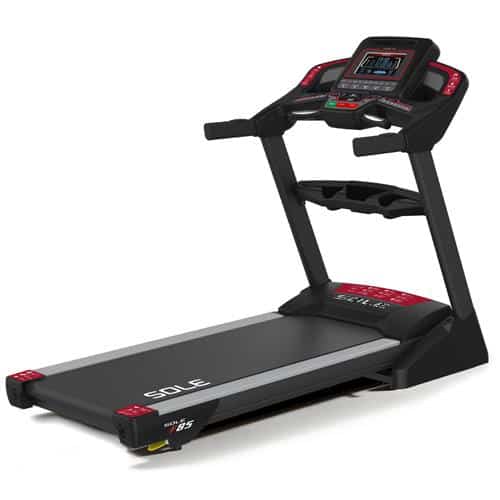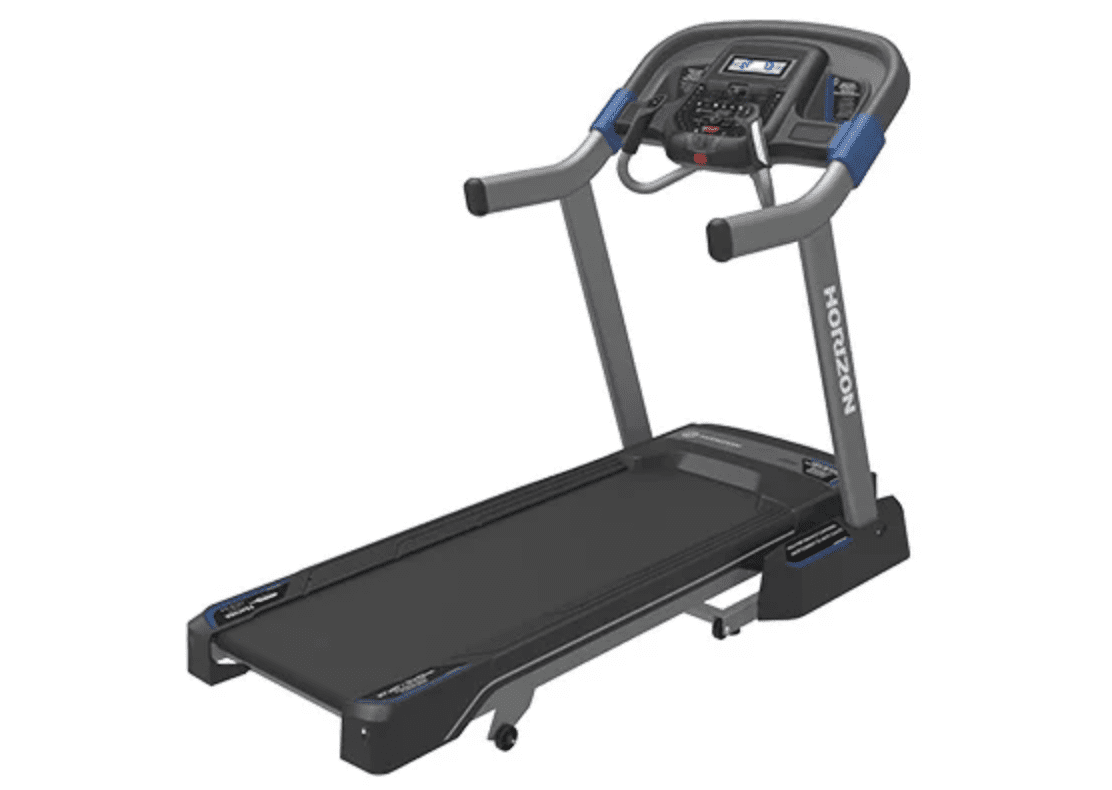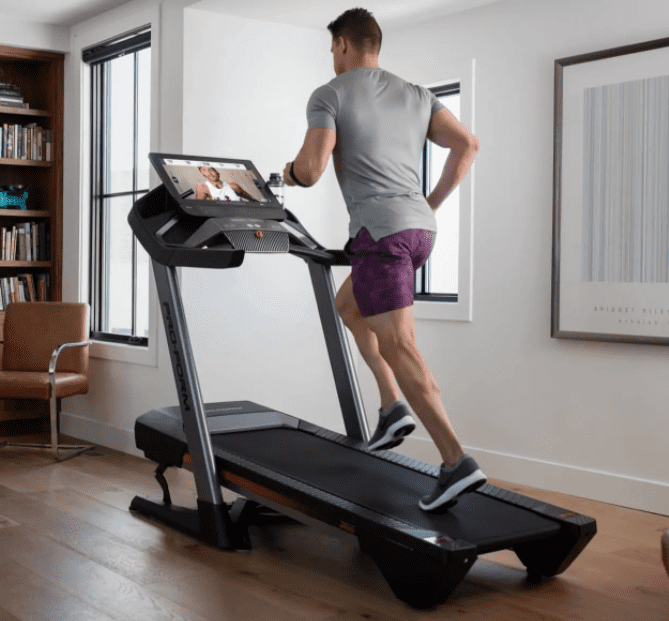Table of Contents
Treadmills Have Been Around for a Surprisingly Long Time!
We make it our business to know everything we can about treadmills and their benefits. That is why were wanted to share this exciting look into the 2, 000 year long history of a machine that is used by millions.
So how did the first treadmills come to be? Were they always used for exercise?
This look at treadmill history may surprise you…
A Closer Look at Treadmill History
100 A.D. Romans Running in a Hamster Wheel
One of the first recorded uses of a treadmill (aka “tread wheel”) was by the Romans in the 1st century AD. They created a tread wheel crane that used two humans to lift weights up to 6000 kg.
The secret behind this clever Polyspaston Crane was a treadwheel in the center that acted much like a hamster wheel. One lucky crane operator would scamper around inside this wheel to power the lifting mechanism.
To give you an idea of how amazing this lifting power was, let’s compare it to the ancient Egyptians building the pyramids. It would take about 50 men to move a 2.5 ton stone block up a ramp during the pyramid construction. The Roman Polyspaston crane was about 60 times more efficient!
With the fall of the Roman Empire, the use of treadmill cranes fell by the wayside. However, they began to be used again by the English and French during the Middle Ages.
The treadwheel crane reappeared around 1225 when it was referenced in archival French literature. These machines were used in harbors, mines, and building sites where they helped construct Gothic cathedrals and castles.
Believe it or not, human powered tread wheel cranes were used up until the 1900s! In fact, you can still see several working versions of these cranes throughout Europe.

A Roman tread wheel used in the 1st Century AD. (Image Source)
Early 1800s. Horse (or Cow) Power Takes Over
There’s a reason that motors have their output measured in ‘horse power.’ Before modern machines, horses and other farm animals provided the power to get things done around the farm.
Farmers in the early 1800s used animal treadmills to perform tasks like churning butter, grinding grain, pumping water, or even kneading dough. An animal such as a horse, ox, goat, sheep, or dog would walk along an inclined ramp that moved as the animal walked. Larger animal treadmills could even power entire sawmills.
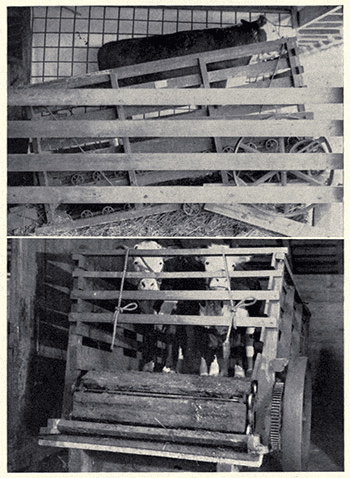
Steer on a farm treadmill. (Image Source)
1818. Treadmills as a Form of Punishment
An especially hard run on a treadmill might feel like punishment, but some early treadmills were actually designed for this very purpose.
Sir William Cubitt, an Englishman and engineer in 1818, suggested that treadmills be used by convicts in prison. He stated that this would be a way to make use of their muscle power and also ‘cure’ their idleness.
The ‘Everlasting Staircase’ was a large wheel with steps that turned slowly while prisoners climbed endless up and up. They were forced to trudge along for six or more hours at a time often taking more than 6,600 steps.
This is the equivalent of climbing 17,000 vertical feet!
These machines were used in prisons during the early Victorian period in Britain. The manpower was used to drive shafts that would mill corn, pump water, or connect to a large fan for resistance. In 1895, there were a total of 39 prison treadmills being used in Great Britain.
It is said that the boring monotony, not the physical exertion, was the most unendurable aspect of this punishment. This practice was eventually discontinued after The Prisons Act of 1898.
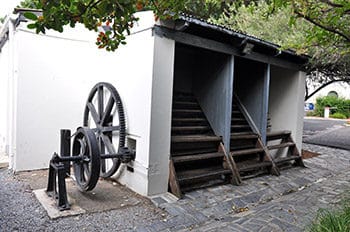
English prisoners were forced to walk on this everlasting stair case for hours at a time until the practice was outlawed in 1898. (Image Source)
1834. Horse Treadmill is Patented
Yes, horses can use treadmills too! The first horse treadmills were likely used to perform farm tasks. Today, horse treadmills are used to help with exercising and rehabilitation of the animals.
If you are trying to evaluate the gait of a moving horse, a treadmill can take out variables like weather, rider error, footing issues, or an inconsistent pace. Some horse treadmills are designed for high-speed workouts, while others can even operate underwater. The water element can help some horses rehabilitate injuries.
Several large universities or research facilities employ large high-speed horse treadmills to study horse physiology. It can help the researchers diagnose cardiovascular problems like “roaring.” During the evaluation, researchers have easy access to the horse to take blood samples, check enzyme levels, hook up EKG leads, or even use a camera scope to view their airway.
Compared to a horse running on a race track, a horse on a treadmill can be easily viewed from 360 degrees. Veterinarians can better access the animal’s motion.
There are companies like Safe-T-Mill that allow you to buy a much smaller horse treadmill for training and conditioning your horse on your own farm.
1851. A Horse Treadmill Powered Fog Whistle is Installed at a United States lighthouse
The Beavertail Lighthouse near Jamestown Rhode Island gained an experimental air fog whistle in 1851. The fog whistle was ordered to be installed by the United States Lighthouse Board and was likely the first to utilize a horse powered treadmill. The horse treadmill powering the whistle would later be replaced by a steam-powered engine.
1871. The Dog Treadmill Puts Canines to Use!
Nicholas Potter of Troy, PA obtained three patents for dog treadmills used to perform smaller farm tasks.
In our modern age, people would never consider putting their beloved pets to work in such a way. Still, treadmills for dogs continue to exist. They are a great tool for owners with overactive animals that don’t get walked outdoors enough.
Plus, modern dog treadmills can be great to help dogs who are overweight or those that need to rehabilitate from an injury. In fact, underwater treadmills are sometimes used for military dogs who need to build up their strength.
1920s. Treadmills Become “Fashionable”
Wealthy flappers of the roaring 1920s lived lives of luxury and excess. They caught sight of some animal powered treadmills from the farm and were determined to bring them into their homes for exercise. The wealthy elite commissioned special machine retrofitted from the animal versions.
These early treadmills had wooden slats, a constant incline, and no motor. They would have been quite difficult to move and tough on the joints without a motor to run the belt.
Not to mention … they didn’t have sneakers back then…ouch!

A treadmill in the roaring 1920s. (Image Source)
1930s. A Major Advance in Comfort!
The wooden slats on exercise treadmills were replaced with a fabric running belt. Eventually, this would morph into the thick flexible belt that we have on modern treadmills. Some machines today have maintenance free belts!
1952. Medical Treadmills for the Cure
By 1952, the concept of walking or running along a moving belt wasn’t completely foreign. Doctors decided to take advantage of this long used concept to measure the cardiac capabilities of their patients.
Dr. Robert A Bruce and Wayne Quinton of the University of Washington created the medical treadmill to study heart and lung diseases. Patients were hooked up to ECG machines that measured their bodily functions while they ran on the treadmill.
Medical treadmills like this are still used in hospitals, rehab centers and physical therapy clinics around the globe.
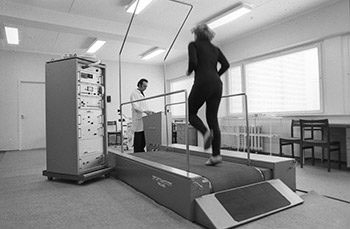
A medical treadmill is used in 1980 in the Olympic Village at the Summer Olympics. (Image Source)
Late 1960s. A Fitness Revolution!
After World War II, many people in the United States were starting to question whether Americans were fit enough. The world was changing and fewer citizens worked in physically demanding jobs.
In short, Americans were getting “softer.”
In 1956, President Dwight D. Eisenhower, himself a military man, established the President’s Council on Youth Fitness. Things really started to take off, though, when President John F. Kennedy came onto the scene.
Kennedy started making waves after his election when he published an article called “The Soft American” in Sports Illustrated magazine. He expanded the role of the President’s Council on Youth Fitness.
One interesting story from this time period involves a 50-mile hike. Kennedy challenged Marine General David M. Shoup to complete this hike in under 20 hours. JFK wanted to determine if modern marines were up to the task. Although Shoup declined the “honor”, the Attorney General Robert Kennedy did undertake the task wearing leather oxford shoes.
The public saw this 50 mile hike as a challenge from the president. Enthusiasm for widespread physical fitness began to grow and eventually morphed into the fitness era that we see today.
1967. Automobile Treadmills Zoom Onto the Scene
This year marks the first time industrial treadmills are used by auto manufacturers to test their car engines.
Large machines called “dynamometers” simulate a driving environment and let manufacturers test the fuel economy of their new models.
1968. Aerobics Enthusiasts Design the First Modern Home Treadmill
Finally, in 1968, the fitness community finally caught on to the full benefits of these machine. In 1968, William Staub designed and invented the first modern treadmill that could be used in a home.
He was inspired by a book on the benefits of exercising called “Aerobics” by Dr. Kenneth H. Cooper. Cooper was impressed by Staub’s machine and helped him develop and market it through his company Aerobics, Inc.
The first treadmill model was called the Pace Master 600.
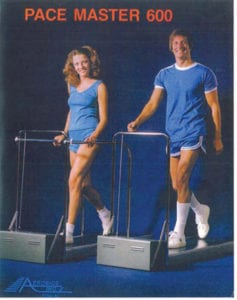
The first home treadmill was released in 1968 by Aerobics, Inc. (Image Source)
1993. An Adjustable Desk is Patented for Treadmill Use
This wasn’t the official “first” treadmill desk, but it was an important step! This patent was for a desk that could be placed over an existing treadmill so employees could keep moving at work. It’s a pretty good idea because there are some serious health hazards to sitting all day.
1994. Treadmills Under Water!
The aquatic treadmill was patented to provide a nearly friction-less walking experience.
Today, these machines go from 0.1 to 8.5 mph and let the user try various motions like walking, running, back-pedaling, side shuffling, and plyometric movements. They are a great tool to help with sports medicine and conditioning.
Hydro treadmills can also add water resistance therapy to help horses and dogs recover from injury.
1996. Ice Skating Treadmills Slide into Action
This treadmill was patented as a way for ice skaters to practice their technique. This is especially good for ice hockey players who want to work on their agility in a very controlled environment. This machine can even be put on an incline while hockey players carry weights, do stick drills, or avoid “obstacles” placed in their way.
1998. Zero Gravity Treadmills in Space
Zero gravity treadmills are even used by astronauts on the international space station! Astronauts use a harnessed treadmill to maintain their muscle tone during months in space.
The second space station treadmill installed is fondly being named “COLBERT” after comedian Stephen Colbert urged his followers to campaign for the name.
To keep things scientific, the name officially stands for: Combined Operational Load-Bearing External Resistance Treadmill.
Yup! COLBERT the treadmill is pretty famous!

An astronaut uses a zero-gravity treadmill on the International Space Station. (Image Source)
1999. Treadmill Desks Gain Popularity with a New Design.
This year marks the official invention of the treadmill desk by Dr. James Levine. He wanted to combat idleness and the health problems associated with sitting long times at the workplace.
Sitting long hours at an office desk can result in conditions like: cardiovascular disease, diabetes, cancer, muscle degeneration, poor leg circulation, bone strength problems, decreased brain power, and back pain.
Overall, people who sit the most have a 49% greater chance of death from any cause than those who sit the least!
To avoid these problems, a treadmill desk can be used so that people walk slowly for several hours throughout the day while still getting office tasks accomplished. In one week, you may walk 30 additional miles using your treadmill desk and that adds up to some major benefits!
There are many different kinds of treadmill desks on the market. We especially like the NordicTrack Treadmill Desks because they can convert easily from a standing to a sitting version.
2000. Practice Your Downhill Skiing with a Treadmill
The skiing treadmill was created this year to help people learn how to control their skis on a sloped surface. The entire platform can be adjusted by an operator to simulate steeper and more shallow hillsides. It’s a great tool for beginners or those who are more advanced who want to work on their technique.

May0036390 picture by Geoff Pugh 12/12/2011 (Image Source)
2005. Anti Gravity Treadmills Help Rehab Soldiers
Dr. Robert Whalen and his “anti-gravity” treadmill started to help rehabilitate soldiers, athletes and seniors this year. Omnidirectional treadmills are also helping military members train. The omnidirectional treadmill lets a soldier move in 360 degrees to respond to his virtual reality training environment.
2014. Bicycle Treadmills in the Netherlands
Treadmill bikes, while sometimes appearing quite silly, also offer some surprising benefits to Dutch exercise enthusiasts. This treadmill bike is more interesting than regular walking because it allows you go much faster and farther with the same walking effort. Treading powers an electric motor that assists the bike in its motion. This technology was introduced in 2014 and is becoming more and more popular.
Present. More Sophisticated Technology
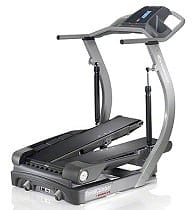
Bowflex Treadclimber – Read our full review here.
Over the next several decades, treadmill technology has improved significantly. Advances were made in cushioning, incline, speed control, and programming.
Today, it is a $1.7 Billion industry!
Modern treadmills have advanced features like Internet connectivity, color touchscreens, virtual running routes, customized coaching, and motion activated speed control.
The major treadmill brands like NordicTrack, Bowflex, ProForm, Sole, Horizon, and Life Fitness aren’t done innovating. Each year new models are released with the latest advancements in ergonomics and technology.
Treadmills of the Future. What’s Next?
In addition, new variations on the classic design are providing users with more ways to work their bodies and minds.
Bowflex created the Tread Climber to combine the benefits of a treadmill with a stair stepper. NordicTrack’s Incline Trainers provide extreme inclines to make you sweat without excess stress to your joints.
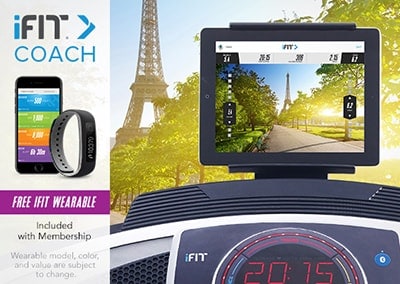
iFit Live on a ProForm Power 995i treadmill – Use a smart device to view your running route.
Treadmill desks allow users walk while they work to avoid the many health complications associated with long hours sitting at a desk.
For 2,000 years, the treadmill has helped humans perform tasks and advance our health. It only seems fitting that new and exciting advancements are still being made as we journey into the 21st century!
Do you like history?
Learn about the surprising history of the women’s sports bra here!
Sources:
https://en.wikipedia.org/wiki/Treadwheel_crane#/
https://en.wikipedia.org/wiki/Penal_treadmill
https://dogsrecommend.com/best-treadmill/
https://www.jfklibrary.org/JFK/JFK-in-History/Physical-Fitness.aspx
https://www.fueleconomy.gov/feg/how_tested.shtml
https://www.nasa.gov/mission_pages/station/behindscenes/colberttreadmill.html

